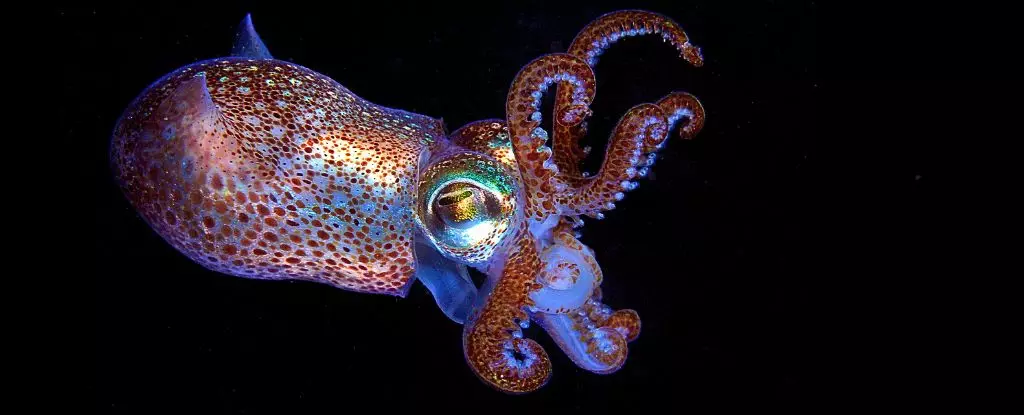Humankind’s quest for sustainability has birthed surprising allies in the fight against climate change. Among these unexpected collaborators are cephalopods, specifically squid—the remarkable beings with a natural talent for color manipulation. Recent groundbreaking research conducted by biochemist Taehwan Kim and his team at Northeastern University unveils an astounding capability: squid chromatophores not only enable these creatures to blend into their environments but may also serve as an organic photovoltaic system, allowing them to harness solar energy directly. This captivating blend of science and animal biology begs the question—how can we apply nature’s ingeniosity for the betterment of our planet?
Color Matched with Solar Power
At its core, this innovative study reveals that the pigments found within squid chromatophores can convert sunlight into electrical energy. Traditionally, we associate electricity with wires and turbines, but this study hints at an organic alternative that the natural world has perfected. Researchers discovered that when the pigment granules from longfin inshore squid were placed in a photovoltaic cell and exposed to light, they generated a charge. This realization not only highlights the extraordinary capabilities of these creatures but also signals a potential shift in renewable energy research.
Typically, when we think of solar energy, we envision large panels sprawled across rooftops or open fields. However, imagine a future where lightweight, biodegradable materials inspired by cephalopod biology can produce energy. Such possibilities are staggering. The implications could stretch far beyond mere energy; they could redefine how we engage with technology and our environment.
Synchronized Surveys of Light
The squid’s ability to manipulate color isn’t merely for show; it serves as a survival mechanism in the predator-rich waters of the North Atlantic. Through their chromatophores, these creatures can reflect a kaleidoscope of colors instantly, adapting to their surroundings or communicating with fellow squids. When subjected to light, the chromatophores reveal their complexity, responding with a synchronous shift in pigment that can sense environmental colors almost instantly—within milliseconds, to be precise. This frenetic and meaningful interaction raises eyebrows; nature has, in essence, developed a sophisticated communication system that operates seamlessly underwater where low light prevails.
The synergy of these chromatophores is particularly impressive. Each tiny, color-filled organ is enmeshed with nerve endings capable of relaying charge signals, enabling a synchronized flex and contraction to maximize their visual impact. One wonders if this model of rapid and efficient response could be a blueprint for our own technological advancements. Could future innovations incorporate an organic touch that adapts to environmental stimuli?
Potential in Biomimicry
The insights from this study could pave the way for revolutionary advancements in areas like wearable technology, as the principles guiding these squid pigments can inspire next-generation electronic materials. They could lead to devices that don’t just react, but dynamically adjust to their surroundings, resulting in greater energy efficiency and adaptability. Imagine clothing that could shift color in real-time based on sunlight exposure, all while capturing solar energy.
Biomimicry has often showcased nature as a fountain of ideas for engineering breakthroughs, but the implications of this discovery hit particularly close to the heart of environmental consciousness. By understanding how nature seamlessly combines efficiency with aesthetic beauty, we can aspire for advancements that are not only functional but also harmoniously integrated with our ecosystems.
The Path Forward
As we delve deeper into the implications of this research, it is vital to remain mindful of our growing digital age. By aligning our technological developments with the natural world, we could open doors to sustainable practices that respect both the environment and evoke the intricate beauty of life forms like squid. The conversation around renewable energy must evolve—shifting from purely mechanical inspirations to a world that looks to the intricate solutions already provided by nature.
In an era that calls for urgent action against climate change, we can take cues from the remarkable ability of cephalopods to teach us that nature’s ingenuity is often waiting to be discovered. Embracing such lessons may well lead to the advancements needed in our relentless pursuit of sustainability, empowering us to harness the power of the sun in new and visually striking ways.


Leave a Reply